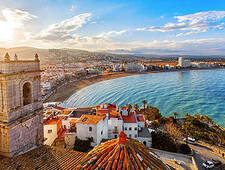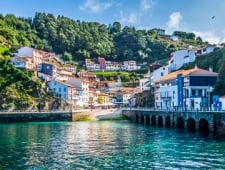Spain boasts a culturally rich landscape, with 15 UNESCO World Heritage cities and numerous sites. Its approach to preserving diverse cultural layers is globally recognized and unmatched.
But what exactly earns a city this prestigious recognition?
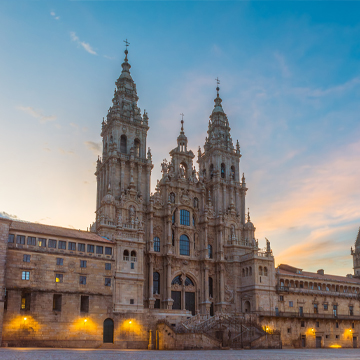 UNESCO World Heritage status is not given lightly. Cities must demonstrate "outstanding universal value" with masterpieces of human creativity, significant cultural exchanges, or unique testimony to civilizations.
UNESCO World Heritage status is not given lightly. Cities must demonstrate "outstanding universal value" with masterpieces of human creativity, significant cultural exchanges, or unique testimony to civilizations.
Each of Spain's heritage cities tells exceptional stories of Europe's cultural evolution. From medieval cities with dramatic natural settings to spiritual destinations bearing witness to the past, here are the must-visit UNESCO cities in Spain.
UNESCO World Heritage Cities in Spain
Toledo: Where Three Cultures Meet
Toledo is a compact medieval city where Christian, Muslim, and Jewish cultures coexist. Thanks to its layers of cultural fusion, Toledo is the most popular choice among history lovers for walking tours in Spain. While the Synagogue of Santa María la Blanca is a testament to the Jewish heritage, the Mosque of Cristo de la Luz reflects the Islamic influence. And the Toledo Cathedral showcases Gothic Christian heritage.
Toledo's cobblestone streets wind through centuries of history, and the hilltop setting overlooking the river offers stunning views, all walkable within the historic walls. This compact layout creates the best walking tours in Spain's UNESCO cities.
Santiago de Compostela: Europe’s Timeless Pilgrimage Destination
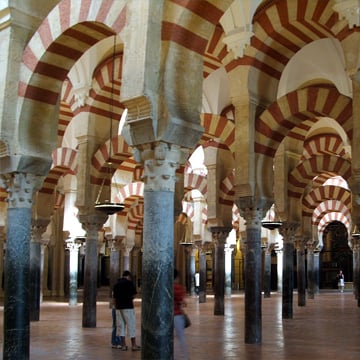 Santiago de Compostela stands out as a unique destination among Spain's UNESCO cities due to its role in Christian history. The Santiago de Compostela Cathedral is the final stop of the Camino pilgrimage route. Its central role in European pilgrimage tradition is what makes Santiago de Compostela a UNESCO site, unlike any other in Europe.
Santiago de Compostela stands out as a unique destination among Spain's UNESCO cities due to its role in Christian history. The Santiago de Compostela Cathedral is the final stop of the Camino pilgrimage route. Its central role in European pilgrimage tradition is what makes Santiago de Compostela a UNESCO site, unlike any other in Europe.
This spiritual and historical significance still draws thousands of pilgrims annually. The iconic Praza de Obradoiro surrounds the cathedral, witnessing this living heritage and tradition. Santiago de Compostela remains Europe's most important pilgrimage destination, where heritage lives and breathes daily.
Córdoba: An Architectural Tapestry of Faith and Power
Córdoba showcases remarkable layers of heritage, spanning centuries of cultural fusion. Its architecture and historic center earned it UNESCO World Heritage city status. The crown jewel is the Mezquita-Cathedral, one of the world's most extraordinary examples of Islamic architecture in Europe. This mosque-turned-cathedral is a testament to the city's multi-cultural past. The most mesmerizing feature is the red and white striped arches that make Córdoba one of the finest examples among Spain’s UNESCO cities with Moorish architecture heritage.
Salamanca: Golden City of Learning
Salamanca, a historic university city in Spain, has been a center of learning for centuries. The university, one of Europe's oldest, helped usher in Salamanca's golden age. It is still alive with students from around the world.
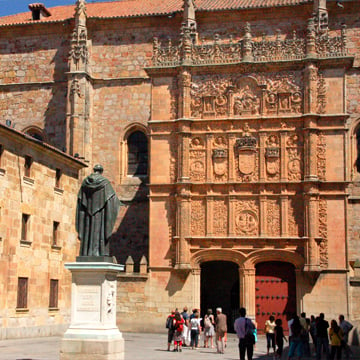 The university also boasts intricate ornamentation. Its façade showcases Spanish Renaissance style. This architectural heritage is evident in the epicenter of Salamanca, reflecting the unique style. Another highlight is the Praza de Mayor, which is considered one of Spain’s most beautiful Baroque squares.
The university also boasts intricate ornamentation. Its façade showcases Spanish Renaissance style. This architectural heritage is evident in the epicenter of Salamanca, reflecting the unique style. Another highlight is the Praza de Mayor, which is considered one of Spain’s most beautiful Baroque squares.
This entire city is built with local sandstone, which creates a golden hue when hit with sunlight. Salamanca earned its beloved nickname "La Ciudad Dorada" (The Golden City) from this radiant stone.
Architectural Styles in Córdoba vs Salamanca
While both Spanish UNESCO cities boast exceptional architectural heritage, they differ dramatically in style. Córdoba represents an East-meets-West fusion, with the Mezquita's unique blend of Islamic and Christian architecture.
Meanwhile, Salamanca embodies the Renaissance, with its cohesive golden sandstone construction, showcasing a distinctly Spanish interpretation. Both cities demonstrate how different historical periods created entirely different but equally magnificent urban landscapes.
Cuenca: The Hanging City Between Two Gorges
Cuenca is a medieval city built precariously between the Júcar and Huécar gorges. It features the iconic "Casas Colgadas" (Hanging Houses) overlooking the river valleys below. Cuenca's Hanging Houses earned a place in UNESCO’s World Heritage list and date back to the 14th century, demonstrating remarkable harmonious integration with the topography.
The medieval walled town is remarkably well-preserved. Old town walls and streets wind around the cathedral, whose towers create a dramatic skyline emerging from the cliffs.
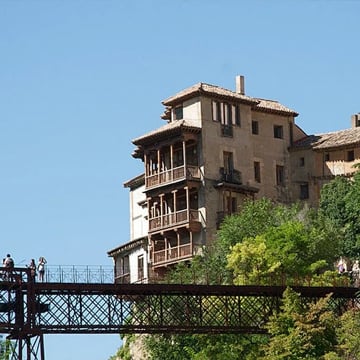 Why is Cuenca's position over the Gorges significant?
Why is Cuenca's position over the Gorges significant?
The city's position over deep river gorges made it a natural fortress in medieval times. It was built by the Moors, and later was used by Christian royalty as well. It's not only a scenically stunning location but also a strategic stronghold that served both Muslim and Christian periods.
Granada: Moorish Legacy in Stone and Garden
Granada's Alhambra and Albaicín represent the pinnacle of Islamic architecture and urban planning. The Alhambra Palace is one of the most iconic monuments in Spain. Adjacent to this palace is the summer retreat of royals, Generalife Gardens, with intricate water features that reflect an ideal paradise.
The Albaicín (Albayzín) is Granada’s preserved medieval Moorish quarter. With whitewashed houses, narrow streets, and hilltop views of the Alhambra, it remains one of the finest surviving examples of Islamic urbanism in Europe.
Tarragona: The Ancient Roman Capital, Tarraco, of Iberia
Tarragona's archaeological ensemble represents the remains of ancient Tarraco. The city of Tarraco was the first and oldest Roman capital in Iberia. The Roman Amphitheatre near the sea and city walls are among the most significant UNESCO sites in Spain, showcasing Roman urban city planning as well as engineering.
Additionally, the Roman Circus in Tarraco is one of Western Europe's best-preserved Roman circus structures and a remarkable world heritage site.
Segovia: Roman Engineering Meets Gothic Grandeur
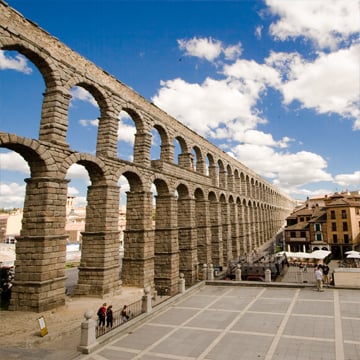 Segovia stands out among Spain's UNESCO cities with its blend of Roman and Gothic architecture. Segovia earned its place on Spain's heritage cities list with its renowned Roman aqueduct. This Roman masterpiece has been standing for over 2000 years, demonstrating exceptional Roman engineering.
Segovia stands out among Spain's UNESCO cities with its blend of Roman and Gothic architecture. Segovia earned its place on Spain's heritage cities list with its renowned Roman aqueduct. This Roman masterpiece has been standing for over 2000 years, demonstrating exceptional Roman engineering.
The old town represents a fascinating cultural crossroads. The Alcazar perches dramatically at the top of a cliff above the rivers, creating a fairy tale-like silhouette. Meanwhile, the Segovia Cathedral stands as one of the last Gothic cathedrals built in Spain.
Ávila: The City of Saints and Stones
Ávila is instantly recognizable with its intact medieval walls (Murallas de Ávila). This fortified complex is considered Europe's best preserved city walls and provides spectacular panoramic views. The walls give Ávila a distinctive fortress appearance, as well as reinforcing its defensive position on the hilltop.
The city also holds a significant place when it comes to the religious history in the Spanish UNESCO towns. It is famous as the birthplace of Saint Teresa, and remains an important pilgrimage destination for Catholic faithful.
UNESCO Sites to Visit in Spain's Major Cities
Antoni Gaudí Masterpieces in Barcelona
Catalonian Modernism and Gaudí's unique architecture in Barcelona are a must-visit. Gaudí's seven UNESCO-designated works include the surreal Park Güell, the majestic Sagrada Família, and the whimsical Casa Batlló.
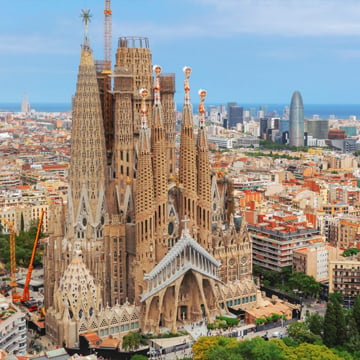 Each of these world heritage sites showcases Gaudí's revolutionary and fantastical vision, making them essential UNESCO sites to visit in Spain.
Each of these world heritage sites showcases Gaudí's revolutionary and fantastical vision, making them essential UNESCO sites to visit in Spain.
Barcelona also provides easy access to Tarragona's ancient archaeological sites.
UNESCO Landscape in Madrid
Paseo del Prado and Buen Retiro Park were recognized as a UNESCO World Heritage site in Spain in 2021. These cultural landscapes have been shaping Madrid's identity since the 16th century.
Paseo del Prado is celebrated as one of Europe's earliest tree-lined boulevards and has influenced similar projects across Europe and Latin America. Meanwhile, Buen Retiro, originally a royal park, has become the green lungs of Madrid after opening as a public space.
The city is also an excellent base for exploring Spain's heritage cities through guided tours in Spanish heritage cities. Madrid is just 30 minutes by train to Toledo, and 90 minutes to both Segovia and Ávila.
Spain's UNESCO Heritage sites and cities offer an unparalleled journey through European civilization. From early Roman engineering marvels to Islamic artistry and Christian pilgrimage traditions, each corner of these World Heritage sites in Spain reveals an extraordinary cultural tapestry.
They offer visitors a glimpse into the remarkable fusion of civilizations that shaped not just Spain, but all of Europe. These heritage cities are must-visit destinations for everyone seeking to experience history that remains living and breathing in Spain today.



